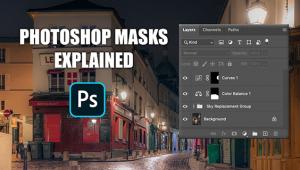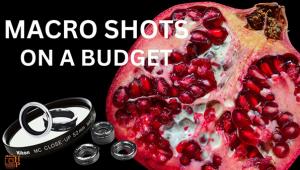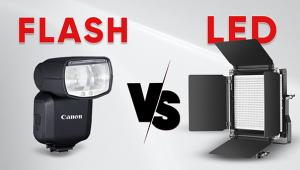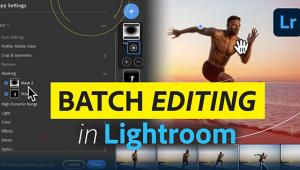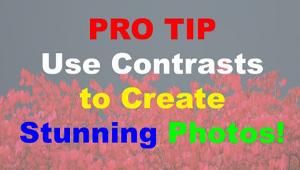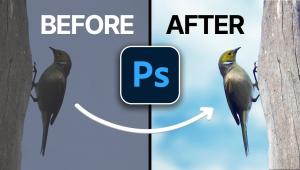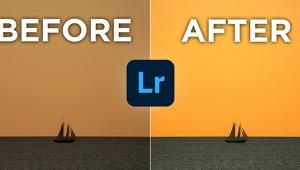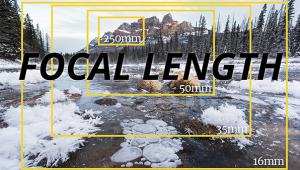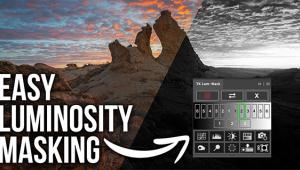Wacom’s Cintiq 21UX ; Big Display With Pen Point Control
Wacom has a long history of providing quality tools for graphic professionals with their graphic tablets. If you've never used a pen and tablet for photo editing you are missing out on a level of control that a mouse just can't provide. Lesser known were the Cintiq line of LCD displays that feature tablet functionality directly on the screen. Expensive and with fewer features than the Intuos line of tablets, many photographers were unable to justify the extra expense. The new Cintiq 21UX, however, is likely to change quite a few minds.

The Cintiq 21UX is a 21.3" LCD with a UXGA resolution of 1600x1200. This
display also brings the same programmable keys and pen as the Intuos tablets.
(For full information on the ExpressKeys and Touch Strip, see my Test Report
on the Wacom Intuos 3 in the July 2005 issue of Shutterbug.)
Unlike the earlier Cintiq models, or the 17" model, which have a higher
bezel area, the 21UX has a completely smooth surface so your hand can freely
move across the display. The ExpressKeys and Touch Strips are located on each
side of the display, making them useful for right- and left-handed people.
In order to work at a comfortable angle, the display comes with a unique tilt-and-swivel
stand that allows you to position the monitor anywhere between 10Þ-65Þ.
The stand also rotates up to 180Þ. The ability to adjust the display based
on how you are using it makes the work experience more pleasant; I found that
tilting the display to about 15Þ worked best for me when making selections,
giving the display a good balance between viewing angle and drawing comfort.
Having a smooth surface from edge to edge also enhances the drawing experience.
Included with the Cintiq 21UX is Wacom's new style padded Grip Pen, which
includes a programmable button, changeable tips (the pen includes three different
nibs--the standard nib is for everyday tasks, a spring-loaded stroke nib
to simulate a brush, and a felt nib that works like a felt-tip marker), and
eraser. The new pen has 1024 pressure levels, which when used with supported
programs such as Adobe's Photoshop and Corel's Painter lets you
control stroke width, or transparency, by changing pressure on the tip. Wacom
also offers optional input devices such as an airbrush tool. The pen also supports
tilt, which changes the way lines or paint are drawn (or, when using the eraser
end of the pen, the way they are erased).
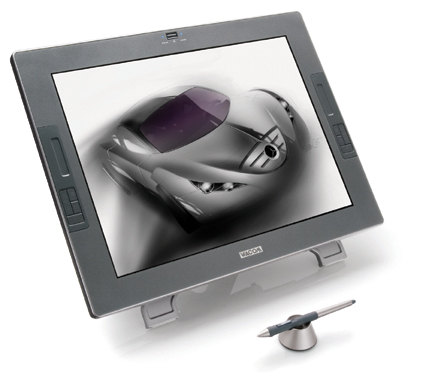
The display is a DVI device and also includes adapters for both VGA (analog)
and DVI-D connections. Wacom ships and installs an ICC profile with the device,
which is good, but I recommend profiling your display for best results. The
display is bright and accurate with good color fidelity but after profiling
the display with the X-Rite Pulse ColorElite I had better accuracy in the shadows
and less of a color cast in the whites.
Setup is quick and easy, not much different than installing a standard LCD display.
All of the special functionality of the Cintiq 21UX comes from the USB connection
(you can use the display as a standard monitor without pen support).
In using the Cintiq 21UX, I was very happy with the accuracy of the pen and
how much easier drawing directly on screen made many of my edit and selection
operations. I've been using a tablet for several years now, so the benefit
of using a pen compared to a mouse wasn't a surprise. Drawing right on
the image, though, made my tablet feel less than precise. Combined with the
ExpressKeys for changing commands quickly, using the Cintiq was soon second
nature. Using the pen directly on screen made masking operations a cinch, and
greatly improved the accuracy of dodge and burn edits as well. After a couple
of hours using the Cintiq, I found it very odd to go back to using a regular
tablet.
Wacom includes an attractive software bundle with the Cintiq 21UX, including
Adobe's Photoshop Elements 3.0, Corel's Painter Essentials 2.0,
nik's Color Efex Pro, and Wacom's Brushes 2.0, which is a set of
predefined brushes for Photoshop that take advantage of the tilt capabilities
of the pen. I would imagine most people spending this kind of money on a display
would already have Photoshop, so the inclusion of Elements is probably of little
use. Painter is a cool application when used with the Cintiq 21UX and pen though,
and I'm a big fan of the nik Color Efex filters.
Wacom has a winner with the Cintiq 21UX. There are very few products that I
wouldn't want to be without and this is one of them. I consider it a must-have
product for the serious digital photographer. Although not inexpensive at $2499,
it's worth every penny.
The system requirements are Macintosh OS X 10.2.6 or greater; Windows 2000 or
XP; available USB port (for pen support); and DVI or VGA connector.
For more information, contact Wacom Technology Corporation, 1311 SE Cardinal
Ct., Vancouver, WA 98683; (800) 922-9348; www.wacom.com.
Jon Canfield is the co-author of "Photo Finish: The Digital Photographer's Guide to Printing, Showing, and Selling Images" by Sybex.
- Log in or register to post comments


















